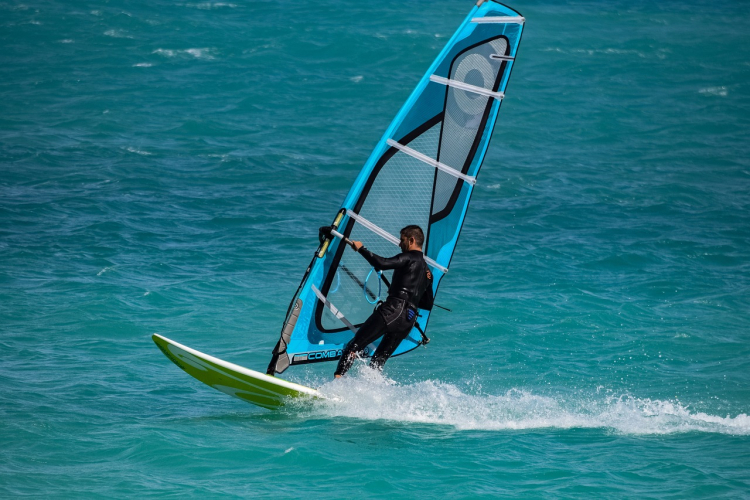Understanding board volume and width
The volume and width of windsurfing boards are key factors that determine their stability, which is paramount for beginners. Volume, measured in liters, indicates the board's buoyancy. A higher volume board can support more weight, making it easier for a beginner to stay afloat and balance. For most beginners, a board with a volume of around 160 to 220 liters will provide the necessary stability to learn basic maneuvers without frequent falls. Similarly, the width of the board affects its stability, with wider boards offering a more stable platform for beginners to stand on. A width of 70-100 cm is generally recommended for novices, as it provides a generous surface area to balance on while still allowing for some maneuverability as skills improve.
The role of board construction
The construction of windsurfing boards also plays a significant role in their performance and suitability for beginners. Boards are typically made from various materials, including epoxy, fiberglass, and foam, each offering different levels of durability, weight, and cost. For beginners, a board constructed with a durable, yet lightweight material is ideal, as it will withstand the inevitable bumps and knocks of learning while being easy to transport and handle. Many beginner boards are designed with a soft-top construction, which provides a more forgiving surface during falls. Additionally, the choice of construction material can affect the board's responsiveness and ease of use in different water conditions, making it crucial to consider where you plan to be windsurfing most frequently.
Considering long-term progression
While it's important for beginners to choose a board that will make learning as accessible and enjoyable as possible, considering long-term progression is also vital. Opting for a board that offers a degree of versatility can be beneficial, allowing beginners to continue using the board as their skills develop. Many modern windsurfing boards designed for beginners are versatile enough to accommodate progression into intermediate skills, eliminating the need for an immediate upgrade. Look for boards that offer adjustable fin configurations or the ability to add a larger sail as your abilities and confidence grow. This approach not only provides better value for money but also allows for a smoother transition to more advanced windsurfing techniques.
Choosing the best windsurfing board for a beginner involves careful consideration of the board's volume, width, and construction, as well as the individual's progression goals. By selecting a board that provides stability and ease of use, while also allowing for growth in the sport, beginners can ensure a positive and fulfilling windsurfing experience. Remember, the right windsurfing board is a crucial companion on your journey from novice to experienced windsurfer, making the selection process an important step towards mastering this exhilarating sport.







